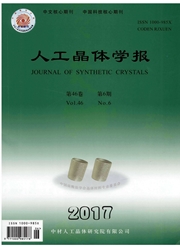

 中文摘要:
中文摘要:
本文采用有机泡沫浸渍结合无压烧结制备了多孔HAP-(β-Ca3(PO4)2)-Si3N4生物复合材料,采用静态血小板浸渍实验研究了所制备多孔生物复合材料的血液相容性。复合材料的表面形态对血小板的沉积有一定影响,孔隙越大、表面越粗糙,血小板越容易沉积。发现在不同成分的复合材料表面,在血小板的粘附、聚集状态方面无明显的差异,其表面大部分区域无血小板粘附,有少部分区域有少量纤维蛋白沉积。表明复合材料具有良好的血液相容性,作为支架材料不会引起凝血现象。
 英文摘要:
英文摘要:
In this paper, the authors prepared porous HAP-(β-Ca3 (PO4 )2 )-Si3N4 biomaterials by the method of polymeric sponge impregnation and non-pressing sintering. The compatibility of the composite was studied by the method of static platelet impregnation. The superficial shape of the composite can influence the deposit of platelet. The content of the deposit increases with the accretion of the pores in the composites and superficial roughness of the composites. There is not apparent difference about the adhesion and conglomeration state of platelet on composite surface with different component. There is no adhesion of platelet on most of surface and only little fibrin deposited on part of the surface. All this expressed that the composite have better compatibility and don' t result to cruor when they are act as porous frame.
 同期刊论文项目
同期刊论文项目
 同项目期刊论文
同项目期刊论文
 期刊信息
期刊信息
